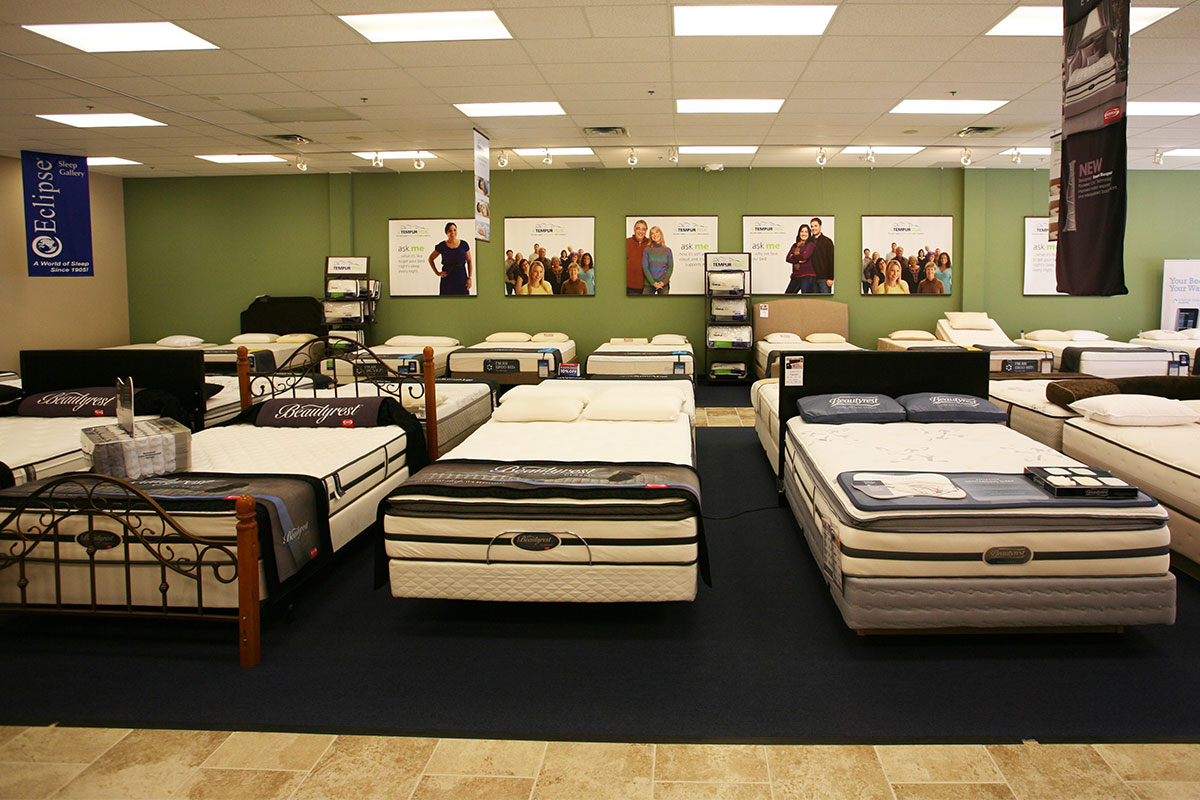One of the main problems with pillow top mattresses is sagging, which is when the top layer of padding starts to sink and lose its shape. This can create an uncomfortable and uneven surface to sleep on, causing aches and pains in the body. Sagging can occur over time with regular use, or even with just a few months of use depending on the quality of the mattress. It can also be exacerbated by heavier individuals or those who tend to sleep in one position.1. Sagging
Another issue with pillow top mattresses is uneven support, which can be caused by the sagging problem mentioned above. The top layer of padding may compress more in certain areas, leading to an uneven surface that can cause discomfort and disrupt sleep. This lack of support can also lead to spinal misalignment, which can contribute to back pain and other issues.2. Uneven Support
Due to the extra layer of padding on top, pillow top mattresses may experience premature wear and tear. The added cushioning can compress and flatten over time, reducing the overall comfort and support of the mattress. This can also lead to the mattress needing to be replaced sooner than expected, making it a less cost-effective option in the long run.3. Premature Wear and Tear
With regular mattresses, finding the right firmness level is relatively straightforward - you can choose from soft, medium, or firm. However, with pillow top mattresses, there are so many variations and options available that it can be challenging to find the perfect level of firmness for your body. This can result in a mattress that is either too soft or too firm, leading to discomfort and poor sleep quality.4. Difficulty Finding the Right Firmness
One of the main selling points of pillow top mattresses is their plush and cozy feel. However, this added cushioning can also lead to heat retention, making the mattress feel too warm for some people. This can be especially problematic for those who tend to sleep hot or live in hotter climates, as it can disrupt their sleep and cause discomfort.5. Heat Retention
The extra layer of padding on pillow top mattresses can also be a breeding ground for dust mites, mold, and other allergens. This can be problematic for those with allergies or sensitivities, as it can worsen their symptoms and disrupt their sleep. It can also make the mattress more difficult to clean and maintain, as the added layers can trap dirt and debris.6. Allergies and Sensitivities
Unlike traditional mattresses, pillow top mattresses cannot be flipped over to even out the wear and tear. This can be a problem as it can result in uneven compression and sagging, leading to discomfort and reduced lifespan of the mattress. Additionally, rotating the mattress can be challenging due to its added weight and bulkiness, making it a hassle for some individuals.7. Difficulty Rotating or Flipping
Due to the plush and soft nature of pillow top mattresses, they may have poor edge support compared to traditional mattresses. This means that the edges of the mattress may compress more when you sit or sleep on them, making it feel like you are about to roll off. This can be inconvenient for those who tend to sit on the edge of the bed or need more support when getting in and out of bed.8. Poor Edge Support
While pillow top mattresses may provide initial comfort and support, they may not be as durable as traditional mattresses. The added layer of padding can compress and lose its shape over time, reducing the overall lifespan of the mattress. This can result in the need for more frequent replacements, making it a less cost-effective option in the long run.9. Durability Issues
Pillow top mattresses are often more expensive than traditional mattresses due to their added features and materials. This can be a barrier for those on a budget or looking for a more affordable option. With the added cost, it's important to consider the potential issues and drawbacks of pillow top mattresses before making a purchase.10. High Cost
Additional Problems with Pillow Top Mattresses

Contribute to Poor Sleeping Posture
 Aside from the issues with durability and maintenance, pillow top mattresses can also contribute to poor sleeping posture. The soft and plush surface may provide initial comfort, but it can quickly sink and create an uneven surface. This can cause the spine to be misaligned, leading to discomfort and even pain in the back, neck, and shoulders.
Furthermore, the lack of support in pillow top mattresses can also lead to pressure points, which can result in poor circulation and numbness in certain areas of the body. This can disrupt the quality of sleep and leave you feeling tired and achy in the morning.
Aside from the issues with durability and maintenance, pillow top mattresses can also contribute to poor sleeping posture. The soft and plush surface may provide initial comfort, but it can quickly sink and create an uneven surface. This can cause the spine to be misaligned, leading to discomfort and even pain in the back, neck, and shoulders.
Furthermore, the lack of support in pillow top mattresses can also lead to pressure points, which can result in poor circulation and numbness in certain areas of the body. This can disrupt the quality of sleep and leave you feeling tired and achy in the morning.
May Not Be Suitable for All Sleeping Positions
 Another problem with pillow top mattresses is that they may not be suitable for all sleeping positions. While they may provide enough cushioning for side sleepers, they may not offer enough support for back or stomach sleepers. This can lead to discomfort and strain on the body, causing a restless night's sleep.
Moreover, pillow top mattresses tend to be thicker and heavier than traditional mattresses, making it difficult for some individuals to move or change positions during the night. This can also contribute to sleep disruptions and discomfort.
Another problem with pillow top mattresses is that they may not be suitable for all sleeping positions. While they may provide enough cushioning for side sleepers, they may not offer enough support for back or stomach sleepers. This can lead to discomfort and strain on the body, causing a restless night's sleep.
Moreover, pillow top mattresses tend to be thicker and heavier than traditional mattresses, making it difficult for some individuals to move or change positions during the night. This can also contribute to sleep disruptions and discomfort.
Can Be Expensive
 Pillow top mattresses can also come with a hefty price tag. Due to the additional layer of cushioning and the use of high-quality materials, these mattresses can be more expensive than traditional mattresses. This can be a major deterrent for those on a budget or looking for a more affordable bedding option.
In conclusion, while pillow top mattresses may initially seem like a luxurious and comfortable choice, they come with their fair share of problems. From durability and maintenance issues to contributing to poor sleeping posture and being expensive, it's important to carefully consider all factors before investing in a pillow top mattress.
Pillow top mattresses can also come with a hefty price tag. Due to the additional layer of cushioning and the use of high-quality materials, these mattresses can be more expensive than traditional mattresses. This can be a major deterrent for those on a budget or looking for a more affordable bedding option.
In conclusion, while pillow top mattresses may initially seem like a luxurious and comfortable choice, they come with their fair share of problems. From durability and maintenance issues to contributing to poor sleeping posture and being expensive, it's important to carefully consider all factors before investing in a pillow top mattress.


















































































































